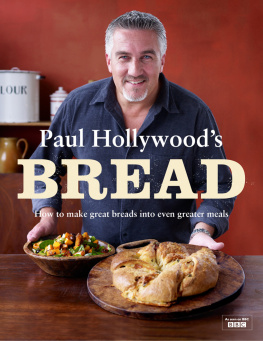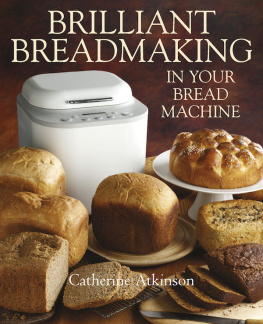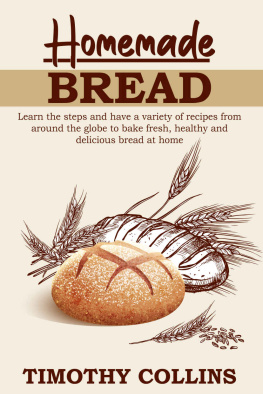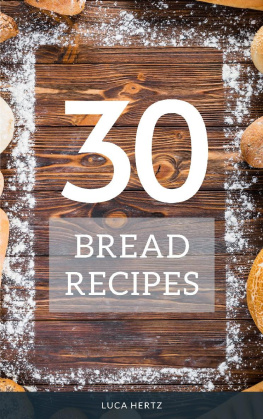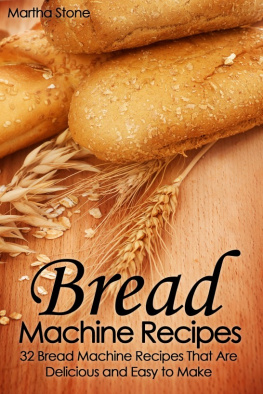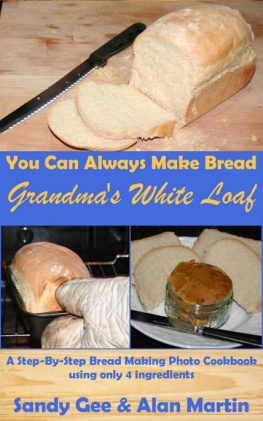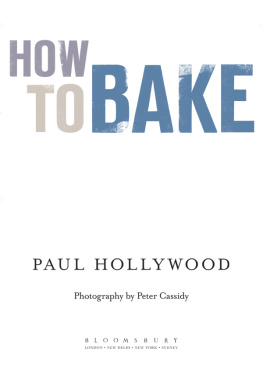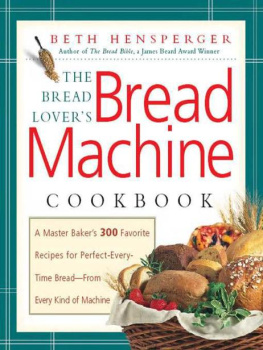
To Alexandra and Josh, and the rest of my baking family.
This electronic edition published in 2014 by Bloomsbury Publishing Plc
First published in Great Britain 2013
Text 2013 Love Productions Ltd and Paul Hollywood
Photography 2013 Peter Cassidy
By arrangement with the BBC. The BBC is a trademark of the British Broadcasting Corporation and is used under licence. BBC logo BBC 1996.
The moral right of the author has been asserted.
Bloomsbury Publishing Plc, 50 Bedford Square, London WC1B 3DP
Bloomsbury Publishing, London, New Delhi, New York and Sydney
www.bloomsbury.com
A CIP catalogue record for this book is available from the British Library.
ePub: 978-1408-8-4122-8
All rights reserved You may not copy, distribute, transmit, reproduce or otherwise make available this publication (or any part of it) in any form, or by any means (including without limitation electronic, digital, optical, mechanical, photocopying, printing, recording or otherwise), without the prior written permission of the publisher. Any person who does any unauthorised act in relation to this publication may be liable to criminal prosecution and civil claims for damages
PROJECT EDITOR Janet Illsley
PHOTOGRAPHER Peter Cassidy
FOOD EDITOR Hattie Ellis
HOME ECONOMIST Lizzie Harris
PROPS STYLIST Risn Nield
INDEXER Hilary Bird
To find out more about our authors and their books please visit www.bloomsbury.com where you will find extracts, author interviews and details of forthcoming events, and to be the first to hear about latest releases and special offers, sign up for our newsletters here.
Note
My baking times in the recipes are for fan-assisted ovens. If you are using a conventional oven, you will need to increase the oven setting by around 1015C. Ovens vary, so use an oven thermometer to verify the temperature and check your bread towards the end of the suggested cooking time.
INTRODUCTION
It is time to take bread off the side plate and put it back where it belongs: in the centre of the table. My book has two aims. First of all I want to teach you how to bake a wide variety of breads. And then I want to show how versatile bread is. Each of the breads in this book has a spin off dish starter, salad, main course or dessert that the loaf is very much part of. So this is more than a baking book: its about the whole meal.
Perhaps because bread is everywhere, people forget how it can be the key food on the table. In the Mediterranean, where I lived for six years on the island of Cyprus, bread is the focal point of family eating, with everyone leisurely sitting around the table, chewing on bread with some pt and salad, and talking together. To me, thats what breaking bread is about: coming together, tucking in, nourishment and pleasure.
The most successful dinner party Ive had was after I had baked a batch of sourdough baguettes at work one morning. I brought them home, put them on the table that evening, opened some red wine and served apples, cheese, wine and pt with the bread. Everyone left saying it was the most enjoyable meal theyd ever had. So when Im presented with an anaemic roll on a side plate in a restaurant, well, thats when I get wound up.
I learnt to bake as a teenager, picking up skills and knowledge by working in my Dads chain of bakeries. I moved on to become head baker at The Chester Grosvenor for five years, and after that at The Dorchester and Cliveden hotels. Then I went abroad and lived in Cyprus, learning how to bake Mediterranean-style breads and passing on what I knew about baking. Six years later I came back to Britain, started my own bakery, became involved in television and everything took off. The Great British Bake Off was a runaway success. Viewers in their millions were switched on to bread, cakes, pastry and pies, and turning on their ovens.
Im proud to be a part of the revolution in baking in this country. People are making their own loaves, trying each others, and buying bread from proper bakeries. Shops are selling different kinds of flour and baking equipment. Cooks used to be more scared of making a loaf of bread than a Victoria sponge, but once youve got the techniques right, its even more fulfilling. A cake has its place: afternoon tea. Bread can be put on the table at breakfast, lunch, tea and supper. This book shows you how.
Bread baking is the easiest thing to learn just a few very simple ingredients put together and the hardest to master. But Im going to take you through the techniques, passing on my secrets and giving you plenty of tips on how to bake. Ill be guiding you with step-by-step instructions and photographs so you have the confidence and ability to make each bread.
Prehistoric man kneaded dough. Baking is in our psyche, but one crucial ingredient you need for success is passion. If you have that, then youll want to better yourself. Nobody will be more critical about your bakes than you. Put in the time and effort, notice what happens in each bake, keep learning and everyone will enjoy what you do not least you. One of the secrets to being a good baker is understanding consistency: what the dough should feel like. Its a touch thing, and youll have more and more knowledge at your fingertips the more you practise.
Be warned: many people find that baking is addictive. Once you get into it, you just want to bake more and more. Its not just about wanting to get better. Theres also something magical about the transformative nature of baking. You start off with a slop in a bowl and end up with something crisp, warm and full of flavour that goes with anything.
Beyond this, you turn a house into a home when you fill it with bread. Everyone wants to be around a place that smells of baking. Once youve put that knife into your loaf and heard the crust splinter, then you get the wonderful smell of the crumb. By the time youve given a slice to your mother, partner, kids, friends, neighbours, aunties, theres nothing left.
With these bread recipes and their spin-off dishes, youll turn simple ingredients into some of the best meals youve ever eaten.
EQUIPMENT
Bread doesnt need much kit: a bowl, a baking tray and an oven are the main requirements. Here are the most useful basic tools of the trade.
Measuring equipment
Digital scales make it easy to weigh small amounts, and a set of accurate measuring spoons is essential.
Bakers scraper
This is a useful tool for dividing the dough (into rolls, for example) and to clean down your work surface so that the dough doesnt stick.
The best scrapers are those with a solid metal blade and a plastic or metal handle; you can also buy plastic ones. Your scraper should be solid enough so the blade can cut through the dough and not bend.
Plastic tubs
I like to use oiled plastic boxes to contain wetter doughs as they rise, because it helps keep their shape. This is particularly true of ciabatta, as you want to keep the dough light and airy before baking.
Bannetons
Bannetons are baskets that can be used to prove loaves. Traditionally made of wicker and round or long in shape, they are sometimes also lined with linen to prevent sticking. They are especially useful for wetter loaves, such as sourdoughs, to keep the shape and lift. A standard bowl can be used instead.
Tins and baking trays
Buy non-stick Teflon-coated tins and sturdy non-stick baking trays. The most useful loaf tin to have is a 1kg tin (about 27 x 14 x 7.5cm). As an alternative you can season standard tins and trays to make them non-stick: brush the surface with a little lard or oil, put it into a hot oven for about an hour, then turn off the oven and leave inside overnight with the door closed. Never wash your seasoned tin just wipe it down with a warm cloth so you dont scrape the surface. What you are doing is building up a resistance to the dough sticking. The more you use your seasoned tin or tray, the less it will stick. Otherwise, line with baking parchment (not greaseproof) or silicone paper.
Next page
